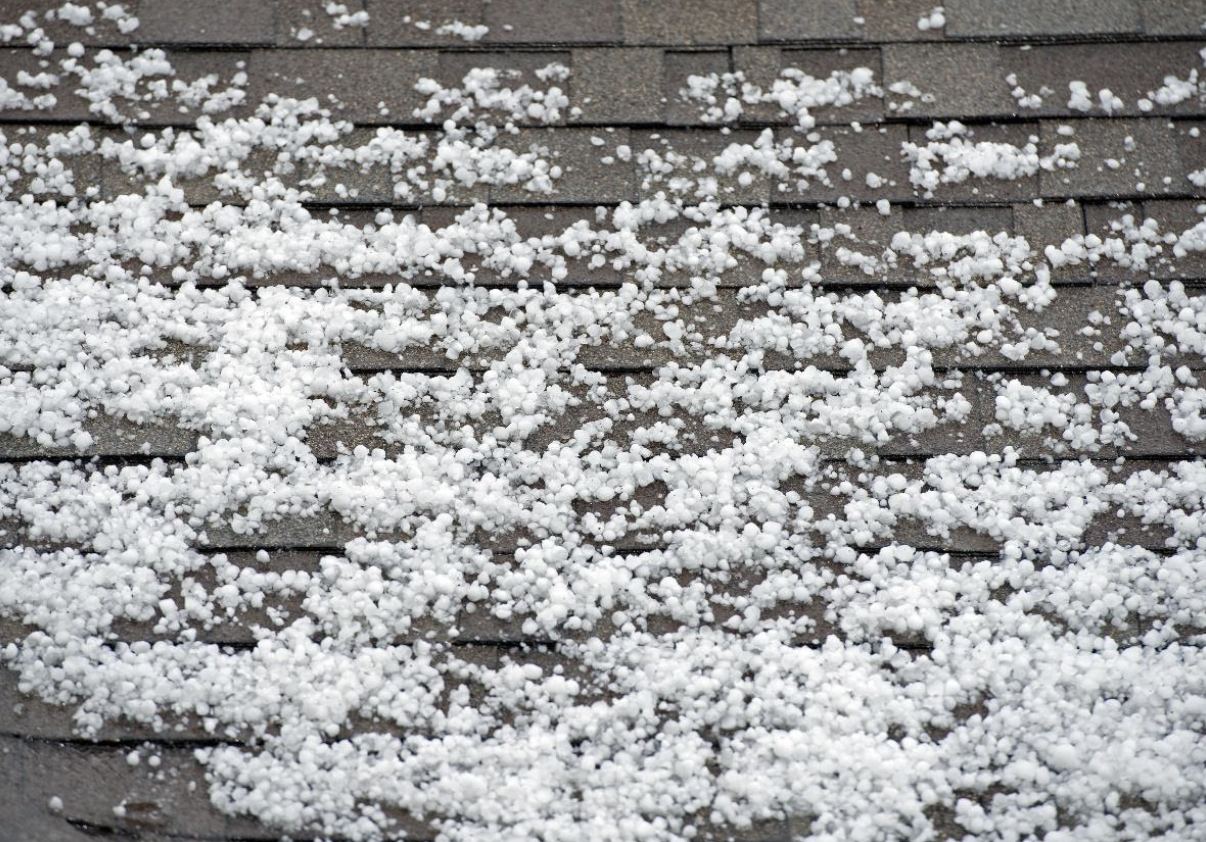
Hailstorms may not be a regular occurrence, but they can inflict a lot of damage on your home when they happen. Hail is when drops of water freeze together and fall to the ground as chunks of ice. Hailstorms are most common in the spring, summer, and fall in some regions of the country.
Since hail is solid ice, the size of the stones can determine how much damage it can do to your property. If high winds are also present, the force of the hail can cause significant damage. Your roof bears the brunt of the destruction. Here is a breakdown of how hail is classified, the approximate size, and the amount of damage it can cause.
Pea-Sized
Pea-sized hail is 1/4 inch in diameter. Hail this size can be common in storms and tends not to cause much damage. It typically doesn’t last long before it turns to rain or comes in multiple short bursts before moving on. Pay attention and you can hear the difference between the sound of rain or hail hitting your home. If you have an older roof with previous damage, this size hail could present a problem.
Mothball-Sized
Mothball-sized hail is 1/2 inch in diameter. Generally, this size of hailstone does not inflict much damage to well-maintained roofs. But if high wind is also present, velocity can add to the potential damage. You may also want to pull your car into the garage! It’s a good idea to have your roof and gutter system inspected for repairs as soon as possible.
Penny and Quarter-Sized
Penny-sized hail is 3/4 inch in diameter, while quarter-sized is one inch. Hail this size is classified as severe. It can cause dents or cracks in your roof, flashing, gutters, siding, or windows. If the damage is left unattended, it can lead to more extensive issues as small leaks remain hidden until mold, water, and structural damage occur over time. If you see hailstones this size, call us to evaluate any problems right away.
犀利士
Golf Ball-Sized
Golf ball-sized hail is around 1 3/4 inches in diameter. Much like the penny and quarter-sized hail, it can do significant damage. Have a professional inspect your roof closely immediately after the storm. It is very likely in need of replacement. You may see damage to the roof easily from the ground and need to replace broken windows and siding.
Larger Hailstones
In rare occurrences, you will hear of hail the size of tennis balls or grapefruit with diameters up to 4 1/2 inches. These uncommon events can do immense damage to your roof and the rest of the house. If you experience this weather, call us to help get your homeowner’s claim started right away. Emergency weather situations can create a backlog of claims, and we can help by providing our own public adjusters to take the strain off the insurance company and get your roof fixed faster.
Hailstorms are among the most destructive weather events, but we don’t recommend climbing on a roof without the right tools and equipment for safety. If you are unsure about the extent of hail damage, have us evaluate your entire home for problems, including:
– Cracks or dents
– Leaking
– Dark stains
– Flaking shingle granules
– Missing shingles
Another indicator of damage is if your neighbors have hail damage, but whether you do or not may depend on your roofing materials and the roof’s age. For example, clay and concrete tiles are more resistant to damage than asphalt shingle, wood, or metal. And a 25-year-old roof won’t hold up as well as one that is five years old. It is important to note: not all roof damage can be detected with an untrained eye, so saving a few dollars by climbing a ladder on your own isn’t the best solution. Contact us if a storm hits your community.
Insurance coverage can vary when it comes to hail damage. At Rose, we work with public adjusters for accurate assessments that make every insurance claim process go smoothly – whether you have a natural disaster or not.
Call us today if you think your roof has hail damage, and we will send out an inspector to see if your roof needs to be repaired or replaced. If so, we’ll walk you through the process, from how to report a claim to watching us clean up the construction debris from the completed project. While you can’t control the weather, you can keep your roof in good condition by letting us help protect your home and family.
Sources:
https://www.nssl.noaa.gov/education/svrwx101/hail/
https://www.nssl.noaa.gov/education/svrwx101/hail/
https://www.spc.noaa.gov/climo/online/monthly/2020_annual_summary.html#




